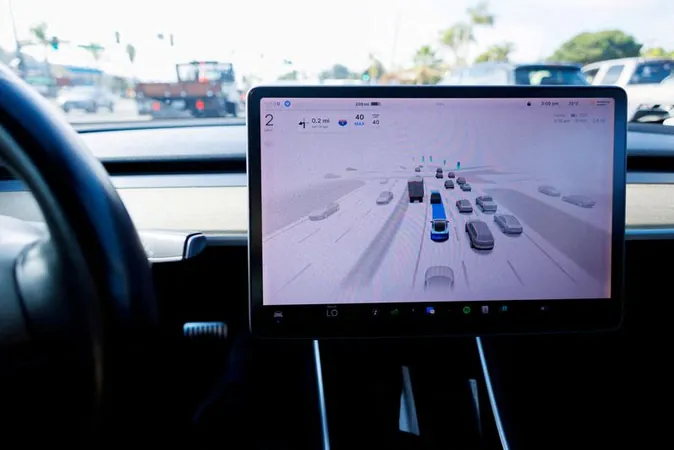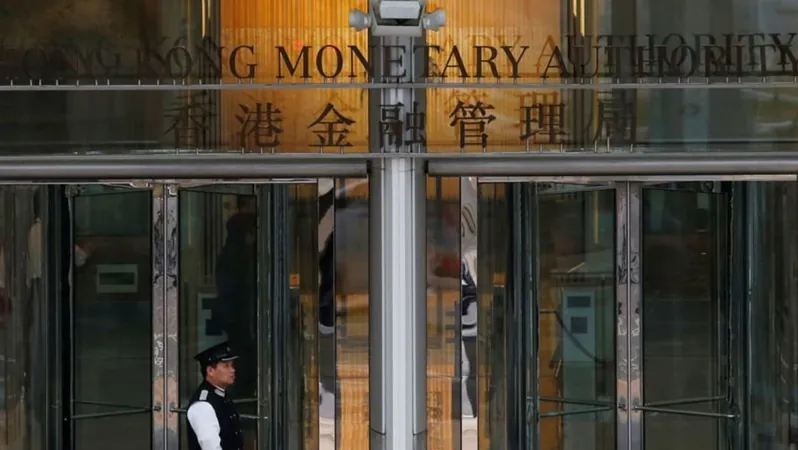
Safety Concerns Arise Over Tesla's Full Self-Driving Claims Amid Investigations
2024-11-08
Author: Ling
Introduction
In a recent development, the National Highway Traffic Safety Administration (NHTSA) has expressed serious concerns regarding Tesla's social media communications promoting its Full Self-Driving (FSD) software. The agency is particularly troubled by posts that imply the software could function as a fully autonomous robotaxi, suggesting that it does not require constant driver oversight, which contradicts the actual capabilities of the technology.
Incidents and Investigation
Following four reported collisions, including a tragic fatal accident earlier this year, the NHTSA opened an investigation encompassing approximately 2.4 million Tesla vehicles equipped with FSD. The incidents occurred under challenging conditions, such as sun glare, fog, and dust—scenarios that reveal the potential limitations of the system.
NHTSA's Concerns
In a publicly released email dated May 14, NHTSA officials cautioned Tesla that its social media language could mislead consumers into thinking the FSD system is equipped for complete autonomy. Specifically, the NHTSA's concerns stemmed from posts sharing stories of users employing FSD in critical situations, including a man using it to reach the emergency room during a heart attack. The agency warned that such narratives could undermine Tesla's messages about the necessity of maintaining driver control.
Tesla's Response
While Tesla has emphasized that its owner’s manual clearly states that FSD is not fully autonomous, and drivers must remain alert, the NHTSA wants the company to reassess how it communicates about the technology's capabilities and limitations.
Ongoing Investigation
The situation gained traction when the NHTSA sent a letter to Tesla requesting answers to several critical questions regarding the FSD system by December 18. This includes inquiries about the system's response to low visibility conditions and the adequacy of the feedback provided to drivers when the system is operating beyond its safety limits.
Fatal Incident
Adding to the urgency of this investigation is a heartbreaking incident in Rimrock, Arizona, where a 71-year-old woman was killed after being struck by a Tesla operating in FSD mode following a rear-end crash. The vehicle's driver had been struggling with sun glare at the time and was not charged in connection with the incident.
Tesla's History with NHTSA
This scrutiny is not new for Tesla. Just last December, the company agreed to recall over 2 million vehicles in the U.S. due to concerns about safeguards within its Autopilot driver-assistance system. The NHTSA continues to evaluate whether these improvements adequately ensure driver and pedestrian safety.
Conclusion
As Tesla CEO Elon Musk continues to champion advancements in vehicle automation, the intersection of innovation and safety remains a hot topic, with legal and ethical implications paramount in a world increasingly reliant on technology for everyday tasks. How this will unfold as the NHTSA investigation proceeds is yet to be seen, but the stakes are undeniably high for all parties involved.




 Brasil (PT)
Brasil (PT)
 Canada (EN)
Canada (EN)
 Chile (ES)
Chile (ES)
 España (ES)
España (ES)
 France (FR)
France (FR)
 Hong Kong (EN)
Hong Kong (EN)
 Italia (IT)
Italia (IT)
 日本 (JA)
日本 (JA)
 Magyarország (HU)
Magyarország (HU)
 Norge (NO)
Norge (NO)
 Polska (PL)
Polska (PL)
 Schweiz (DE)
Schweiz (DE)
 Singapore (EN)
Singapore (EN)
 Sverige (SV)
Sverige (SV)
 Suomi (FI)
Suomi (FI)
 Türkiye (TR)
Türkiye (TR)